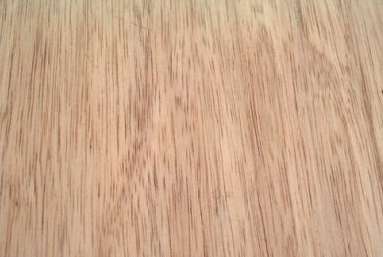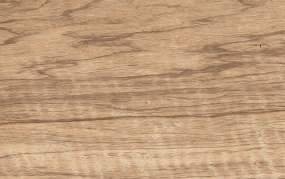the REST of the pictures on this page will give you a better overall feel for this wood

limba / Terminalia superba
(syn Terminalia altissima)
Two loosely related woods are idigbo / Terminalia ivorensis, which looks a little bit like limba and nargusta (Terminalia amazonia) neither of which looks much like limba nor do they have particularly similar anatomical characteristics. They DO both use the name "limba" according to my references but I don't think that's true in the U.S.A
5" x 5" flat cut, 5" x 5" quartersawn, 3/4" wide end grain, and a 1/4" x 1/4" end grain closeup.
Diffuse porous with medium to large sparsely and randomly distributed pores with winged aliform parenchyma. Frequent pore multiples, usually radial, 2 to 3 pores long, often some confluent parenchyma, sometimes diffuse-in-aggregates parenchyma which occasionally appears to be banded parenchyma. Very thin rays, hard to see even at 10X
NOTE: This site previously had separate pages for white and black limba because I shared what I now know to be a common misconception among us woodworkers that those are separate (albeit related) woods. In fact, all limba comes from the same tree and the "white" and "black" designations are based on color and grain. See the color section of the "fact sheet" for full details.
I have kept the "white" and "black" sections separate below













































%20wet%20dry%20s50%20web.jpg)

























































































%201%20s50%20web.jpg)
%202%20closeup%20s50%20web.jpg)
%202%20s50%20web.jpg)
%203%20s50%20web.jpg)
%204%20s50%20web.jpg)
%205%20s25%20web.jpg)
%2006%20s25%20web.jpg)
%2007%20s25%20web.jpg)
%2008%20s25%20web.jpg)
%2009%20s25%20web.jpg)
%2010%20s25%20web.jpg)
%2011%20s25%20web.jpg)
%2012%20s25%20web.jpg)
%2013%20s25%20web.jpg)




%2060%20s50%20web.jpg)
%2061%20s50%20web.jpg)































%20veneer%201%20s25%20web.jpg)

































%20a%20plh.jpg)
%20b%20s25%20plh.jpg)